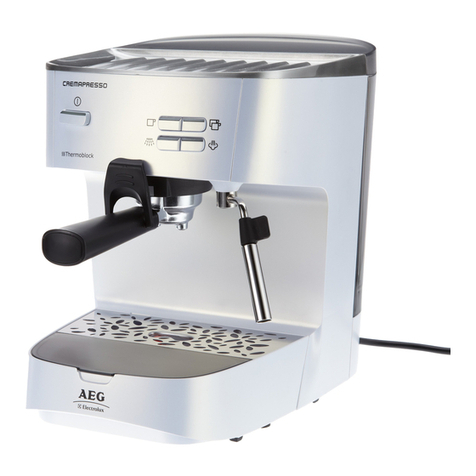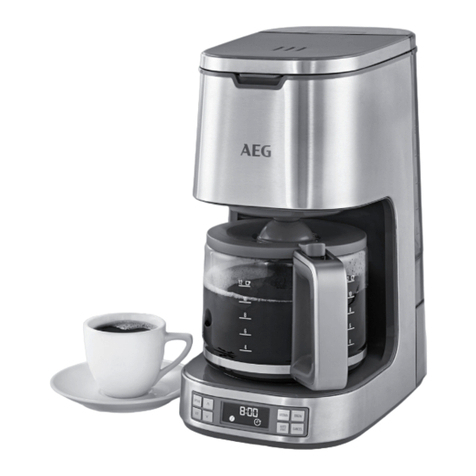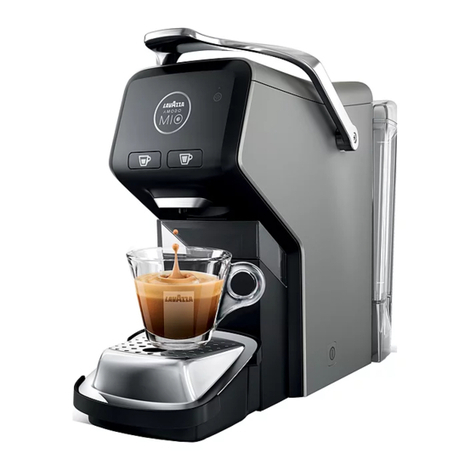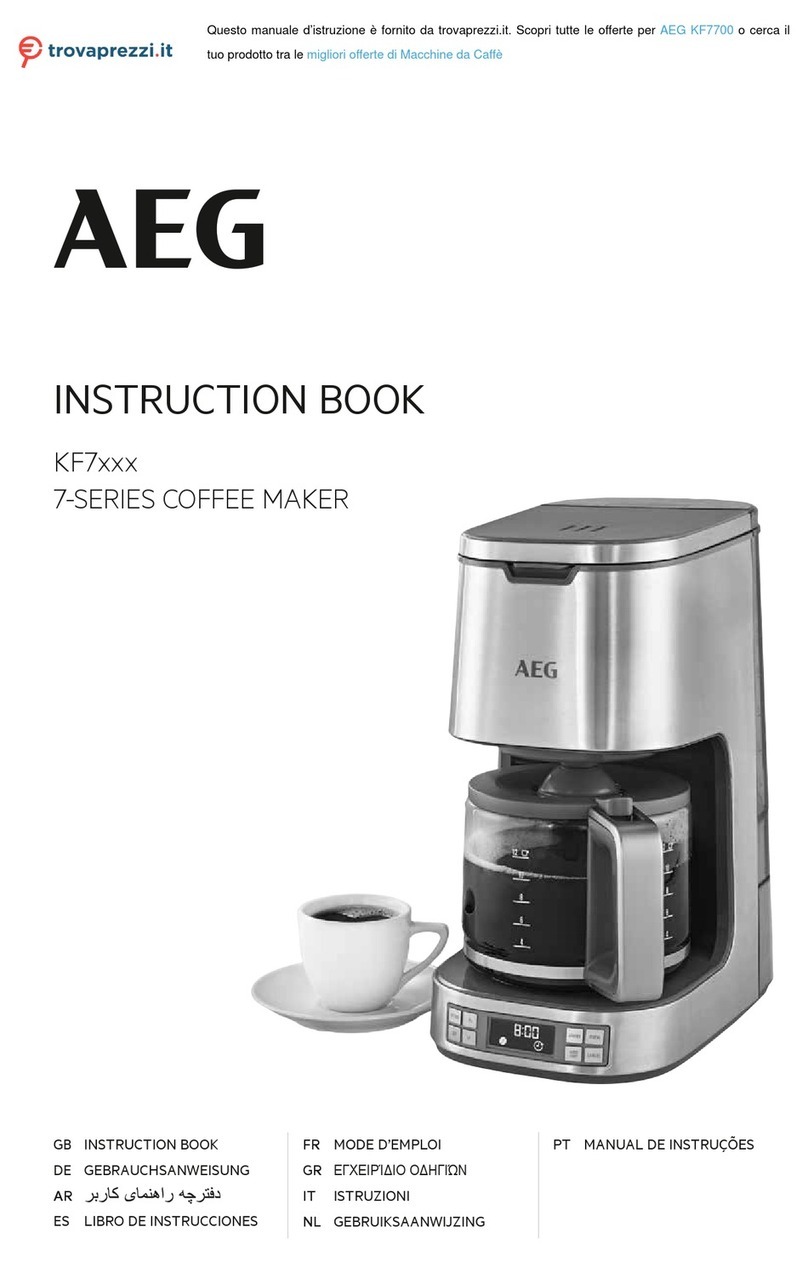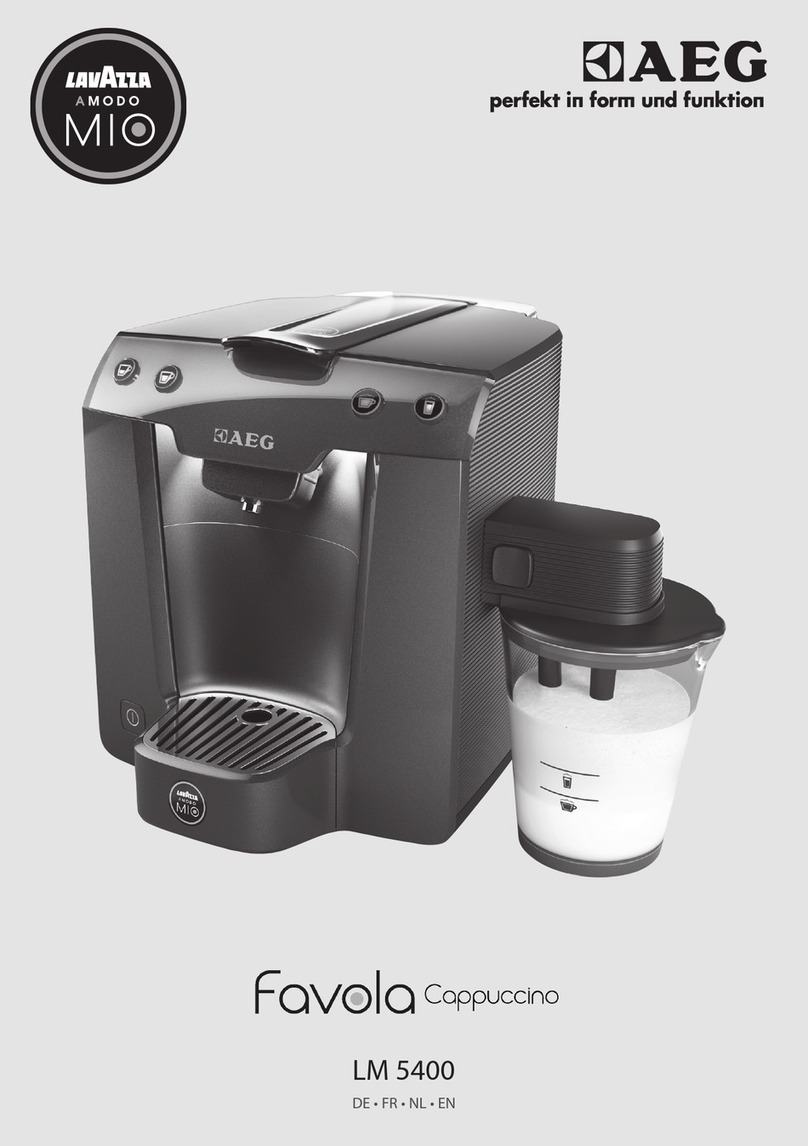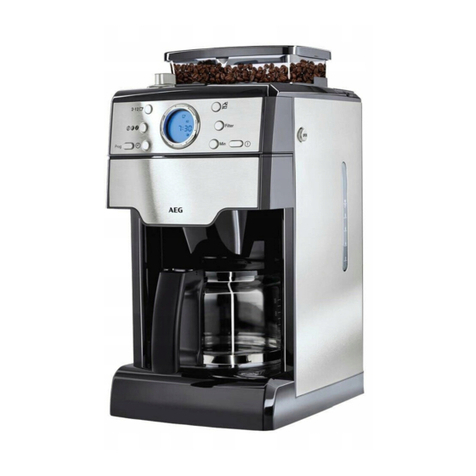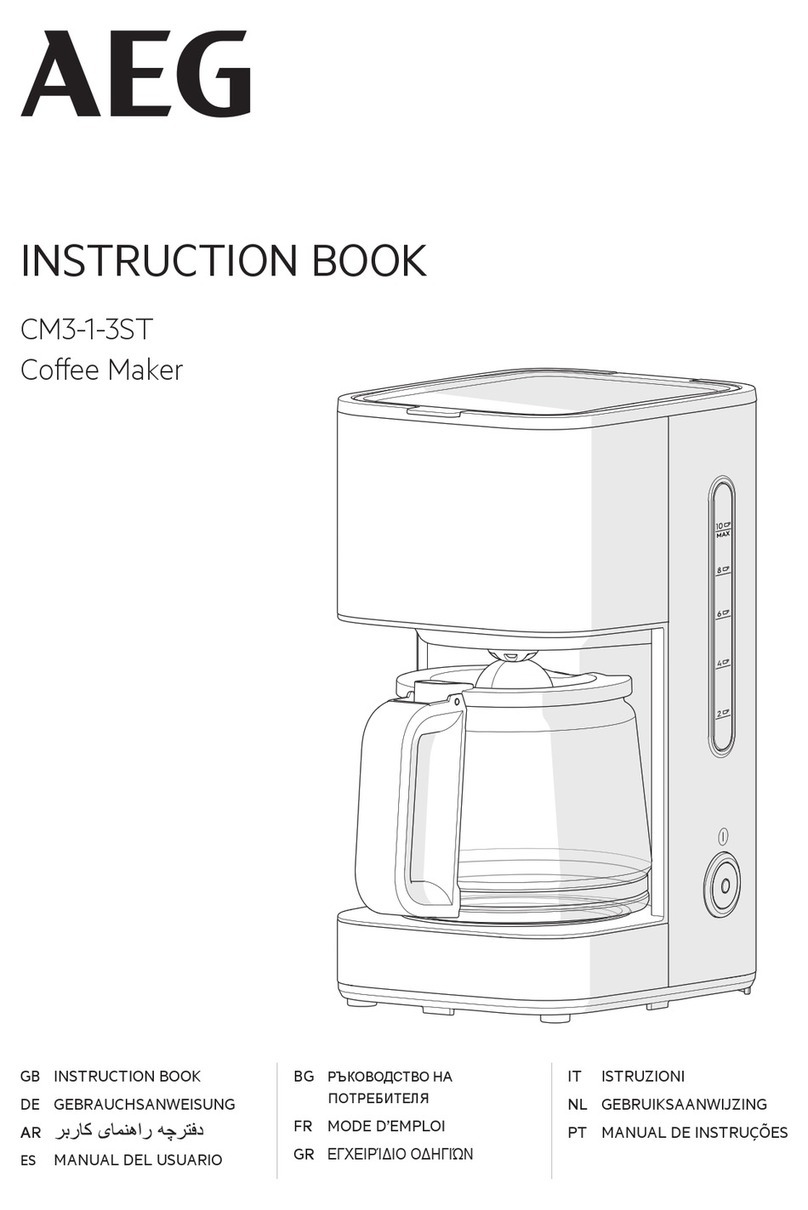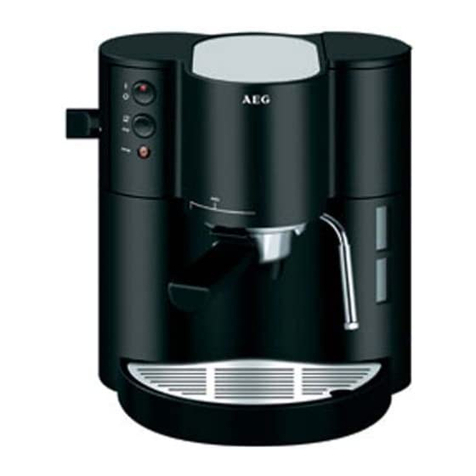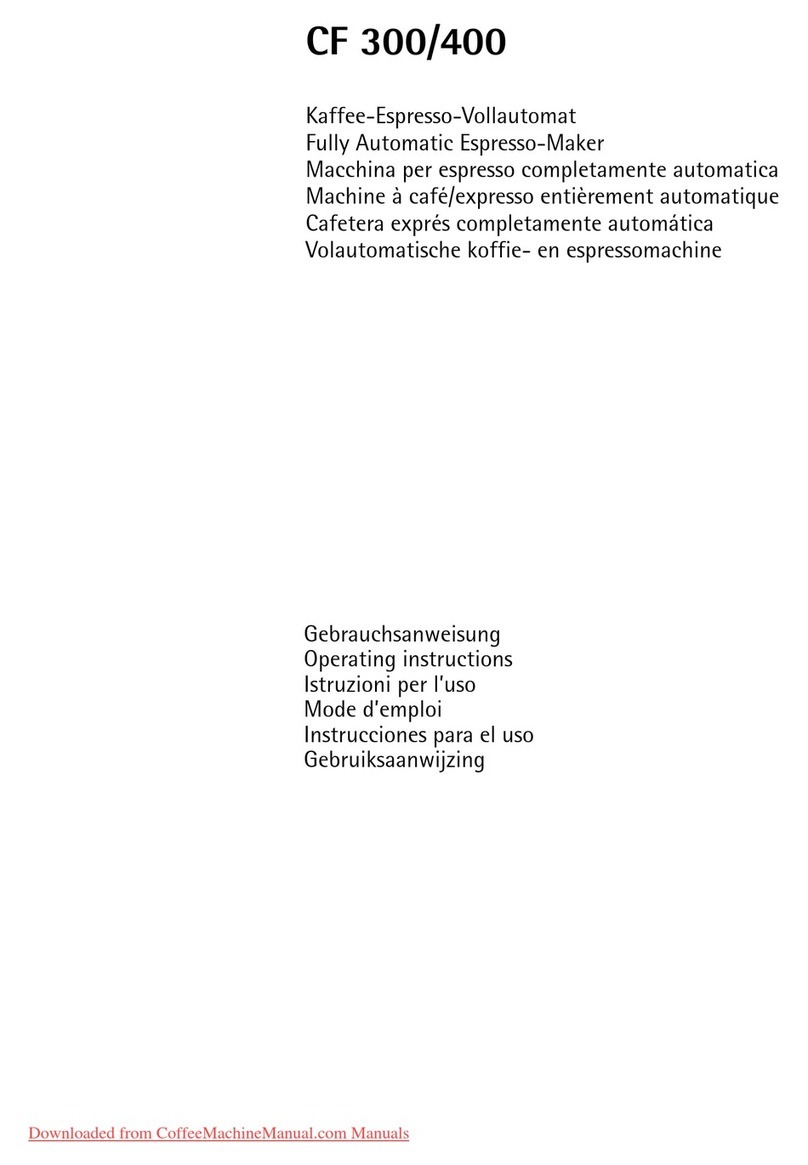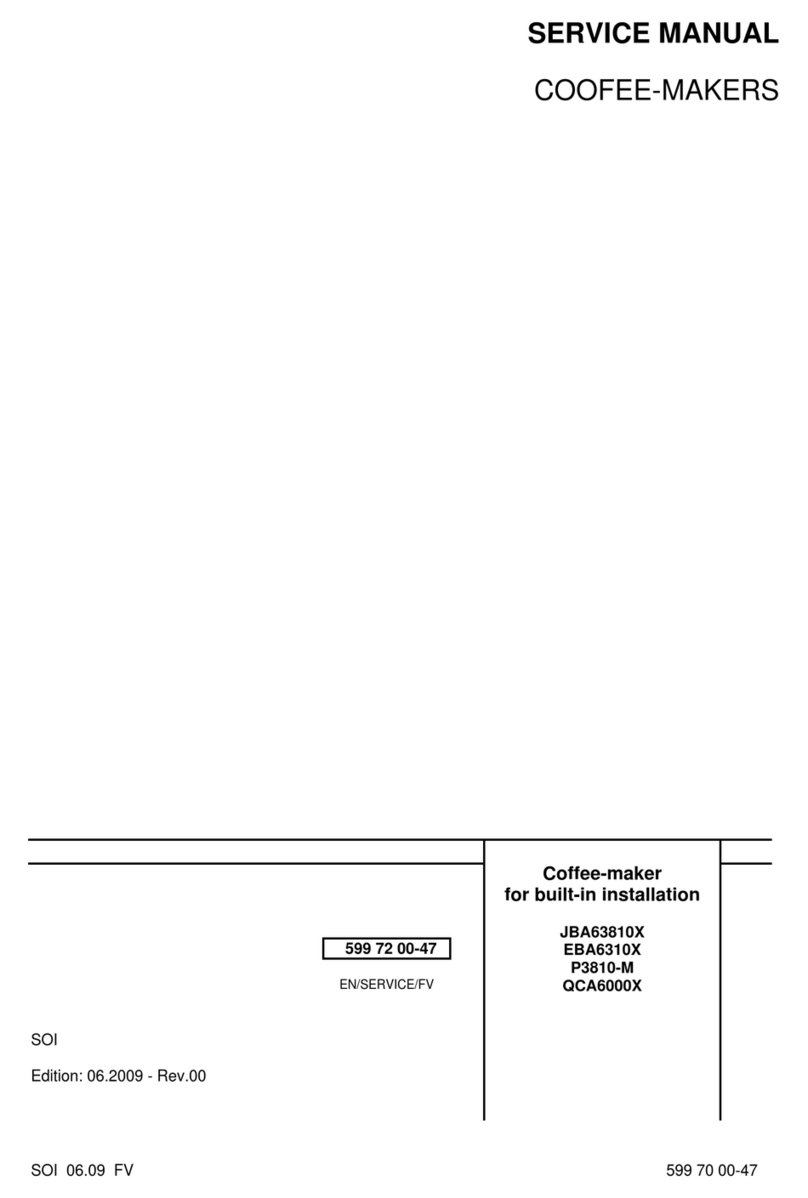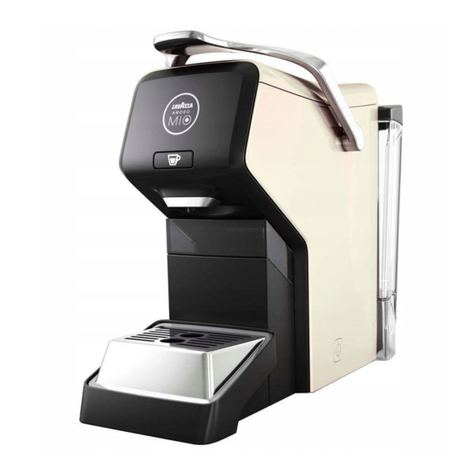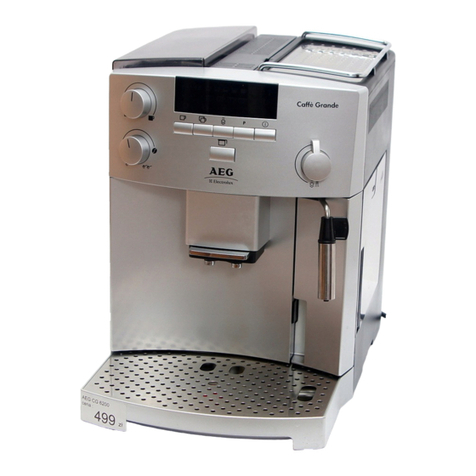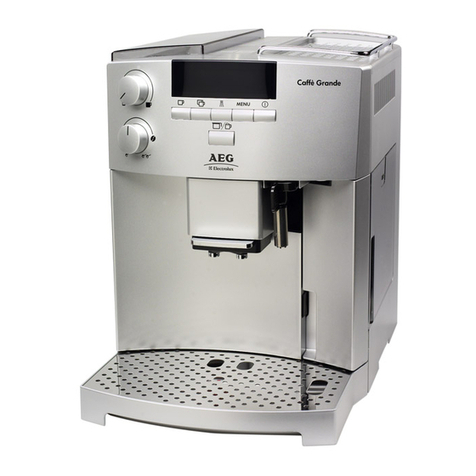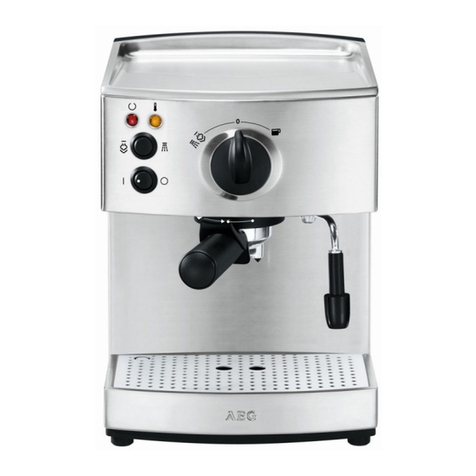g
23
1. Before Using for the First Time
1.1. Setting up the Appliance
Choose a suitable, level, stable,
unheated, dry surface. Check that
there is adequate air circulation.
Important: If the appliance is placed in
a warm room after being brought in
from the cold, wait approx. 2 hours
before switching it on!
1.2. Cable Compartment
(Figure 3)
Your appliance has a cable compart-
ment at the rear. If the mains lead is
too long, you can push the cable that is
not needed into the cable compart-
ment.
1.3. Programme Selector
(Figure 1/Q)
Positions 1-9 on the programme selec-
tor may be used to carry out or check
the various different functions.
Position 1: Coffee selection
Adjust the programme selector to this
position when you wish to prepare cof-
fee.
Position 2: Coffee temperature
You can use this position to set the
coffee temperature between REGULAR
and HIGH.
Position 3: Automatic switch off
Use this position to set when you want
the appliance to switch off automati-
cally. The appliance has 6 time steps.
Position 4: Rinse
If you require an additional rinse, it
can be carried out on Position 4 (see
Section 2.8).
Position 5: Cleaning
If “CLEAN UNIT” appears in the display,
the appliance must be cleaned using
a cleaning tablet. The cleaning pro-
gramme runs automatically. Follow
the instructions in the display (see
Section 8.2).
Position 6: Decalcifying
If “UNIT DECALC.” appears in the dis-
play, the appliance must be decalcified
using a decalcifying agent. The decalci-
fying programme runs automatically.
Follow the instructions in the display
(see Section 9).
Position 7: Water hardness/water
filter
The hardness of the water used can be
set in this position (see Section 2.6).
Position 8: Language
In this position you can set the lan-
guage in which you wish the informa-
tion to appear in the display. You can
select the following languages: Ger-
man, English, French, Italian, Spanish
or Dutch.
Position 9: Counter/coffees
Various functions can be requested in
this position.
Repeatedly pressing the selection
button on the programme selector
displays information about frequency
of use and the extent of calcification
in the following order:
– Number of coffees
– Number of times decalcified
– Number of times cleaned
– Number of hot water preparations
– Number of steam preparations
– Number of filter changes
– Degree of calcification:
0%, 25%, 50%, 75%, 100%
2. Prior to Making Coffee
2.1. Filling the Water Tank
(Figure 5)
If “FILL WATER TANK” appears in the
display, the water tank must be topped
up.
0Open the lid (Figure 1/B) and remove
the water tank by the handle. Please
only use cold, clear water, and do not
fill beyond the MAX mark.







